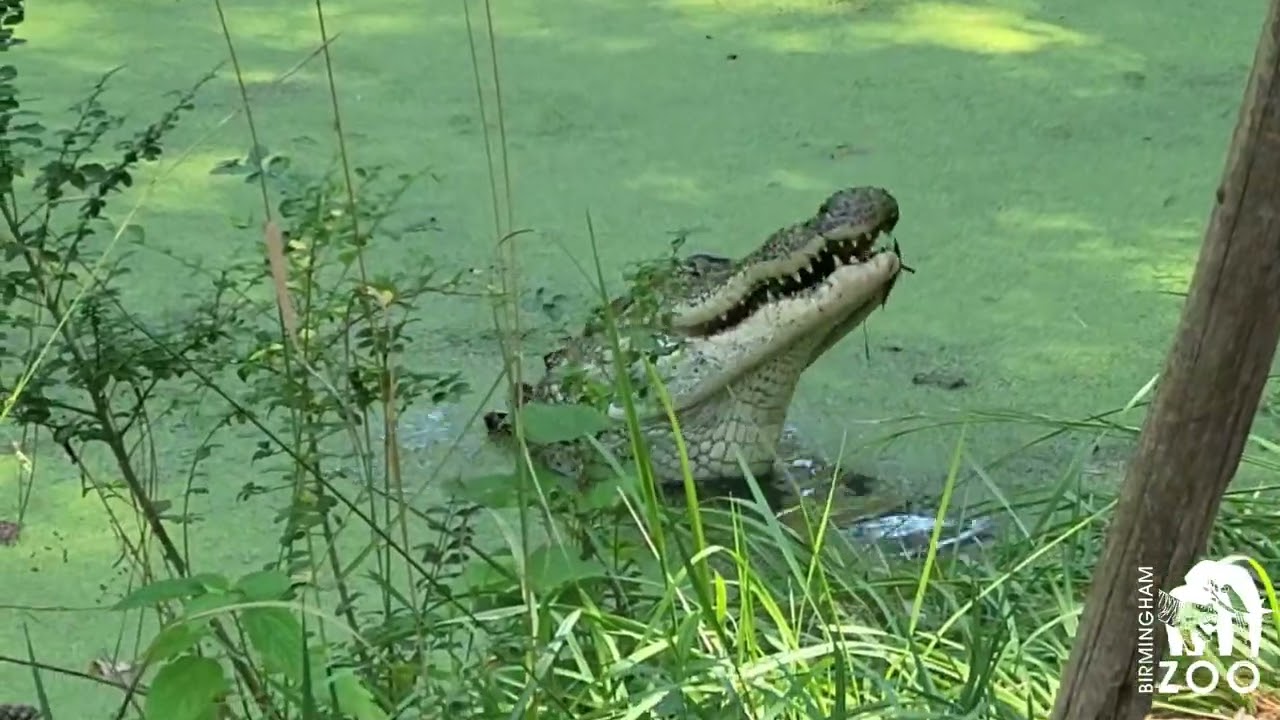Summary:
– Introducing the American alligators at the Birmingham Zoo
– The unique characteristics and adaptations of American alligators
– The conservation efforts and challenges faced by these amazing creatures
– Exciting facts and interesting anecdotes about alligators
– The importance of education and awareness in protecting alligator populations
Welcome to the Birmingham Zoo, where we invite you to meet our fascinating American alligators! These incredible creatures, known for their sleek bodies, powerful jaws, and captivating presence, have found a home in our zoo, providing a unique opportunity for visitors to learn about and appreciate their remarkable nature.
Let’s dive right into the world of American alligators and discover the intriguing aspects that make them such incredible animals to behold!
The American alligator, scientifically known as Alligator mississippiensis, is a species native to the southeastern United States. These reptiles have made their home in this region’s iconic swamps, marshes, rivers, and lakes, where they roam as the kings and queens of the waterways.
One of the most remarkable aspects of American alligators is their ability to adapt to various environments. Despite their fearsome appearance, these creatures play a vital role in the ecosystems they inhabit. As apex predators, their presence helps maintain the delicate balance of the food chain by controlling populations of prey animals such as fish, turtles, birds, and small mammals.
Within our zoo, we carefully replicate our American alligators’ natural habitats, providing them ample space to exhibit their natural behaviors. As you observe them, you will notice their highly adaptive bodies, designed specifically for their semi-aquatic lifestyle. Their long, muscular tails are perfect for propulsion in water, while their webbed feet aid in swift swimming and movement on land.
Did you know that American alligators have an incredible sense of hearing? Their eardrums are located directly behind their eyes, allowing them to detect vibrations caused by movement in the water. This exceptional sensory adaptation enables them to accurately pinpoint the location of their prey even in murky conditions, making them highly effective hunters.
Conservation efforts play a crucial role in ensuring the survival of American alligators in the wild. These magnificent creatures were once endangered due to overhunting for their hides, a decline in suitable habitats, and a lack of understanding of their ecological importance. Thankfully, dedicated conservation programs, including those at zoos like ours, have contributed to their recovery.
The Birmingham Zoo actively participates in conservation initiatives to preserve American alligator populations. By supporting research, public awareness campaigns, and habitat protection, we strive to ensure the long-term survival of these magnificent reptiles. We aim to inspire future generations to appreciate and actively protect these incredible creatures through educational programs and exhibits featuring our alligators.
Let’s delve into some delightful alligator facts that will pique your interest!
1. Communication: While most people associate alligators with their deep bellows, they also make a variety of vocalizations, such as hisses, grunts, and even infrasound! These low-frequency sounds can travel long distances through water, allowing alligators to communicate with each other over vast areas.
2. Nesting Rituals: Female alligators build nests made of vegetation where they lay their eggs. Interestingly, these nests generate their heat through microbial activity, helping to regulate the temperature and ensure the successful incubation of the eggs. The dedicated mother will guard the nest, protecting her offspring until they hatch.
3. Tooth Regeneration: Alligators continuously replace their teeth throughout their lives, with some individuals producing around 2,000 teeth in a lifetime! This remarkable adaptation allows them to maintain their strong bite force as they consume prey, primarily fish, turtles, and small mammals.
4. Speed and Agility: You might be surprised to learn that alligators, despite their large size, can reach impressive speeds both in water and on land. In water, they can swim up to 20 miles per hour (32 km/h), while on land, they can achieve speeds of 11 miles per hour (18 km/h). So, never underestimate the swiftness of these impressive reptiles!
5. Tolerance to Cold: Unlike their close relatives, the crocodiles, American alligators have a fascinating adaptation that allows them to survive in colder climates. When winter arrives, they undergo a process called brumation. This is similar to hibernation but occurs in colder temperatures. Alligators slow down their metabolism during brumation and remain dormant, conserving energy until the temperatures rise again.
Visiting the Birmingham Zoo and meeting our American alligators is an exciting experience and an opportunity to learn about the importance of wildlife conservation. By supporting zoos and engaging in educational programs, we can play a significant role in protecting these magnificent creatures and the ecosystems they inhabit.
So, join us as we celebrate the incredible world of American alligators and embark on a journey of discovery, conservation, and awe-inspiring encounters with nature’s true marvels!
*****
Source Description
Meet Lemmy, Clyde and Sparkles, your Birmingham Zoo American Alligators!


